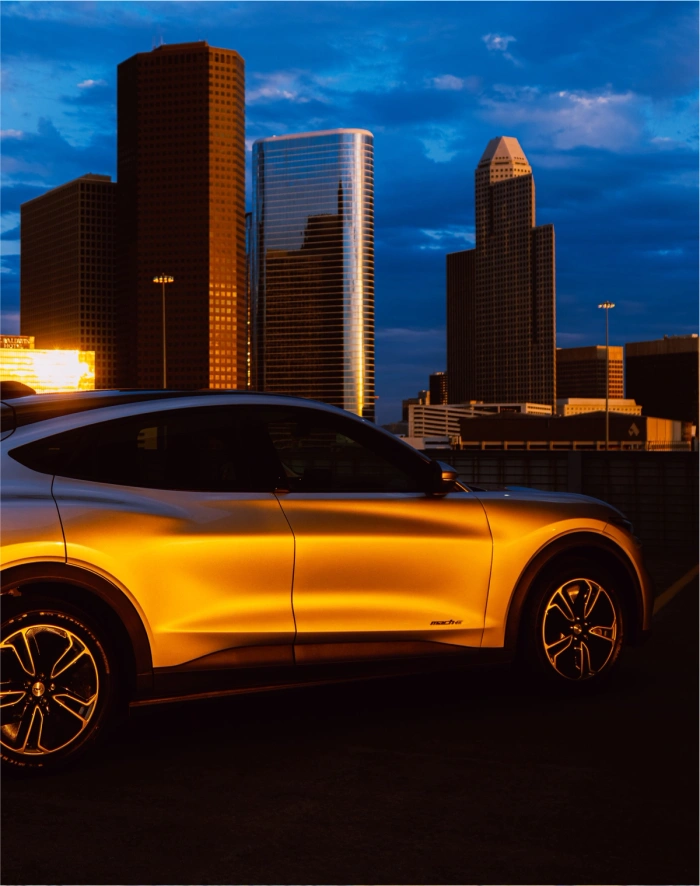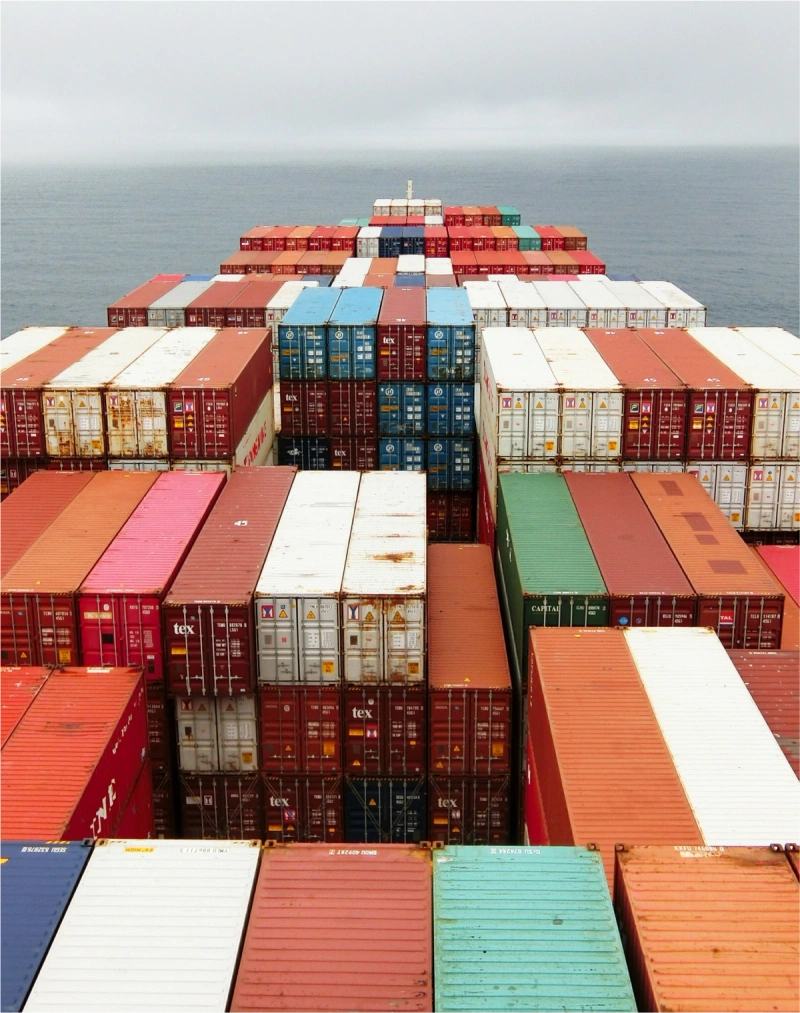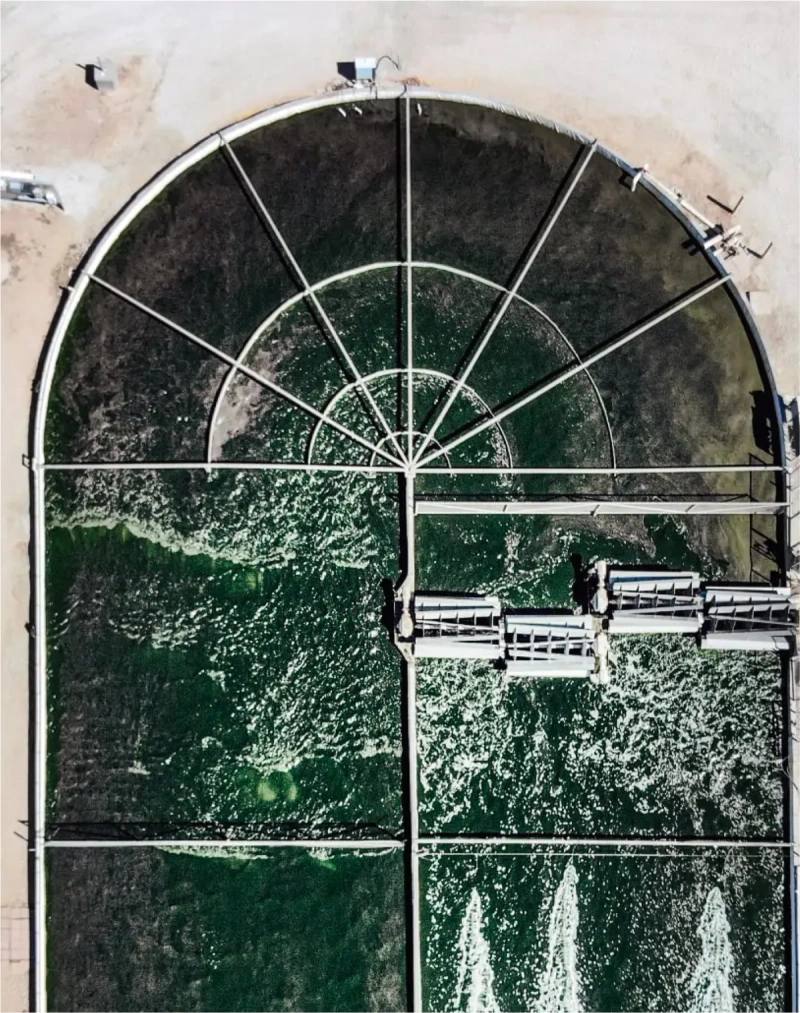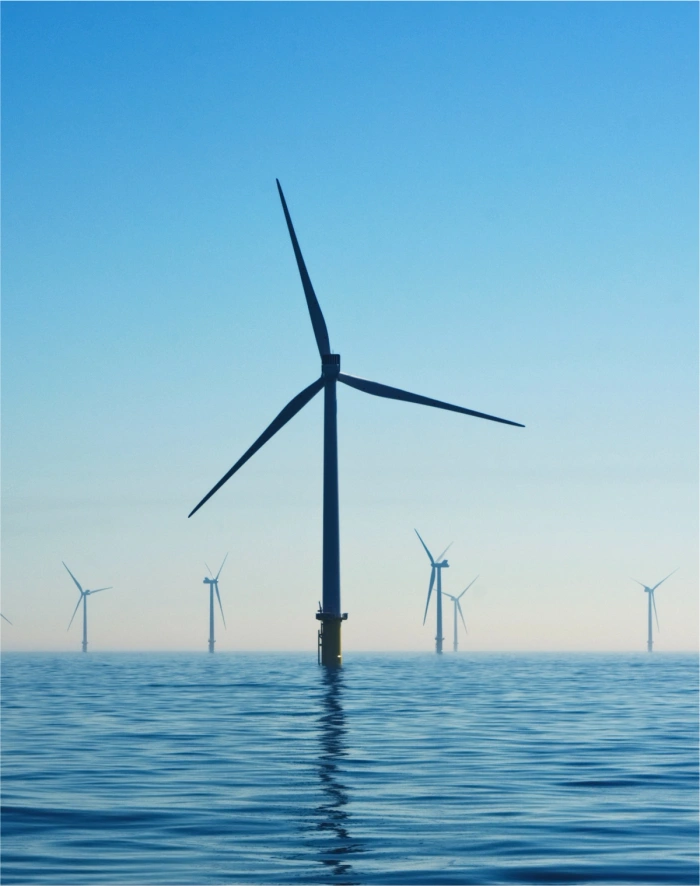The SOLUTION
How We Get Around
Future of Zero-Carbon
Transportation
If you only have brain space for three things
Electric Vehicles (EVs) have come a long way. They are now roughly as cheap and can travel just as far as regular cars. And by 2035, some projections show they could account for half of the new vehicles sold in the United States.
The minerals that power batteries are in jeopardy. Not only are we potentially running out of some of them, but most of the world’s current lithium, cobalt, and nickel production is concentrated in just a few places, meaning conflict or natural disaster could cause significant supply disruptions.
Going forward, long-distance and heavy-duty transportation will be the biggest technological hurdle. We need better public and private collaboration not only to incentivize the uptake of batteries and e-fuels but to improve their performance, endurance, and affordability.

A postcard illustration of flying policemen, which was commissioned for the 1900 World's Fair in Paris
For the 1900 World’s Fair in Paris, a series of 87 postcards were commissioned, each envisioning what France would look like in the year 2000. Most were pictures of transportation — absurd transportation.
Policemen wear winged uniforms, directing traffic in midair while transatlantic travelers sit in undersea buses hitched to humpback whales.
A postcard illustration of an underwater whale bus, which was commissioned for the 1900 World's Fair in Paris
Presumably, the postcard artists never paused to ask some basic questions. Like, how would one domesticate a large sea mammal so it can pull a bus? Or why would it be more efficient to elevate traffic 10 meters off the ground rather than leave it on the Champs-Élysées?
For those of us trying to help usher in zero-carbon ways of moving around , the Paris postcards are a good reminder: Visions of the future are a dime a dozen. But if you haven’t figured out the science or the economics yet, you’ll look foolish.

An electric vehicle
Today, road transportation accounts for roughly 75% of all transportation-related emissions, and passenger cars are responsible for half of that. Electrifying the Earth’s fleet of cars would be an enormous achievement, and many of the cost and engineering barriers have already been overcome. The remaining challenges involve building out charging infrastructure, improving battery safety and the supply chain to make them, as well as the time it will take to turn over the current fleet of vehicles.
It’s the other postcards — ships, planes, and heavy-duty trucks that need to travel long distances — that are still a little fuzzy.
These modes of transportation are simply much harder to electrify than passenger vehicles. They’re heavier; they require more energy and must cover more distance; and they’re far more expensive.
75%
We do know what the general picture should look like, and it’s not whale-powered underwater boats or individual propeller planes. In fact, the outline looks a lot like it does today: fuel. Just without the carbon. Unfortunately, that’s a lot harder than it sounds. Bio- and electrofuels are potential substitutes, but today, the Green Premium of these products is much too high to widely commercialize them.
The science and economics of creating carbonless liquid fuel just aren’t mature yet. And it’s going to take huge investment, historic innovation, and major policy changes to get there.
Battery Fires and Rare Metals
The Remaining
Roadblocks for
Electric Vehicles
1
1
Electric vehicle EVs adoption is still in its infancy, but like an infant, it’s expected to grow fast: according to a recent report by Bloomberg New Energy Finance, electric vehicles could be 75% of all global passenger vehicle sales by 2040.

Aerial view of the Skouriotissa copper mine in Cyprus
Over the past decade, auto and policymakers have taken a jackhammer to the roadblocks that previously stood in the way of mass EV adoption. Some EVs, today, are nearly as cheap as their internal combustion engine counterparts. With one battery charge, they can travel about as far as a traditional vehicle does on a tank of gas.
And when the battery is low, there are thousands more places to plug in. In the United States, the number of charging stations nearly doubled between 2019 and 2022, and the Inflation Reduction Act could triple the current number, adding an estimated 500,000 EV chargers by 2030. We still have a ways to go to make EV charging as widespread, seamless and fast as filling up a gas tank, but our progress is undeniable.
And yet, as these roadblocks have started to crumble, two new ones have appeared.

An aerial view of an open-pit iron mine in Kayseri, Turkey
EV Adoption
The first roadblock to EV adoption involves battery materials .
Today, most batteries are powered by lithium while nickel and cobalt are also crucial components. Current mining and processing of these three minerals is not evenly distributed across the planet.
In fact, more than half the world’s cobalt mining is in the Democratic Republic of Congo while China accounts for 40% of the world’s chemical lithium production — and nearly 80% of the cathode production for batteries. Now imagine what happens if one of those countries experiences a major crisis, like a war, a natural disaster, or trade restrictions.
If the concentration of so many critical minerals in so few places exposes the battery supply chain to geopolitical risk, how can the future of road transportation be battery-powered vehicles?
One answer is battery recycling . Another is developing batteries that use far less nickel and cobalt — or even none at all. There are a handful of possible configurations, but a promising one is a lithium-iron phosphate battery, or LFP.
LFPs don’t use any nickel or cobalt, and while they pack less energy than a standard lithium-ion battery at a cell level, they have higher safety properties. That means you can pack more cells in a smaller space and basically provide the same range you get with a nickel cobalt manganese (NCM) battery. In February, a company called Our Next Energy outfitted a BMW with their LFP for a test drive. The BMW made it 400 miles on a single charge.
Both innovations — battery recycling and batteries with less critical minerals — are still years away from widespread use. But they will need to be critical pieces of our strategy as the world’s lithium, nickel, and cobalt resources begin to wane.
The other roadblock is battery safety — or more specifically, battery fire safety. Electric vehicles are actually more fire safe than traditional vehicles. Generally speaking, for every one electric vehicle that catches fire, there are 35 regular cars that go up in flames. Still, fires involving lithium-ion batteries tend to burn hotter and longer than fires fueled by gasoline.
35
For car makers, addressing battery fires isn’t just a matter of protecting lives; it’s also a matter of preventing bankruptcy-threatening recalls, factory fires, and loss of inventory in transit. Today, two percent of the cars on the road are electric. If an automaker has to recall two percent of its fleet because of a battery defect, that’s a big financial problem. But it’s not company-ending. The math changes, however, when electric cars are 100% of the vehicles a carmaker sells.
Charge declined!
Why batteries won’t work for planes, ships, and trucks at long distances — and what to do about it
2
2

Shipping containers at a port
Of the five “grand challenges” discussed in this report, transportation is the only one where people have to lug their energy around with them. The problem is that — as far as power sources go — it’s hard to find something better to lug than gasoline. It’s shelf stable, cheap, and energy dense.
Fleetzero is working to decarbonize cargo shipping
Per gallon, gas costs about as much as bottled water and packs more energy than a stick of dynamite. The best lithium-ion batteries, by comparison, contain 35 times less energy pound-for-pound, meaning that to get the same amount of energy as a gallon of gas, you’ll need batteries weighing 35 times heavier.
There are some modes of transportation — like cars — where the battery-for-gasoline tradeoff makes sense. But as we start talking about vehicles that need to drive longer distances and carry heavier loads than a family sedan, the rationale for batteries breaks down. An electric cargo truck capable of driving 600 miles in a single charge would need to carry so many batteries, it would have to haul 25% less cargo. And that’s saying nothing of ships that need to stay afloat and planes that need to stay aloft.
Good news is, trucking and aviation are changing. A higher percentage of flights are short, which means more flights can be electrified or hydrogen-powered, especially cargo fleets and regional passenger travel. And trucks are more volume-limited than weight-limited these days, meaning they can use more of their weight-carrying capacity for batteries.
But for the full decarbonization of these modes, we will likely need a solution other than batteries. And the best way we’ve found is to create a fuel that approximates what’s used now — something that can be used in existing infrastructure and looks like gasoline, works like gasoline, but doesn’t emit carbon dioxide (CO₂) like gasoline. That’s the key innovation challenge for transportation: clean, liquid fuels.
Biofuels
One pathway is biofuels, which are fuels synthesized from plants, crops, and waste materials. Biofuels aren’t new. In the United States, they’re actually old enough to have a complicated reputation because every non-electric car that runs on gasoline includes at least 10% ethanol — a biofuel that, depending on how it’s produced, could emit more CO₂ than it saves. Growing the corn to make ethanol requires fertilizer, and eventually, as you grow more and more ethanol crops, that means cutting down forests or overtaking space that could otherwise be used to grow food for humans.

Aerial view of an algae biofuel project
There are ways of making biofuel that don’t require heavy agriculture or mass deforestation — like algae. It’s a great source of lipids, which are hydrocarbons — the building blocks of any liquid fuel. A company called Viridos believes they can produce algae so lipid rich, they can grow fuel in ponds as cheaply as oil companies drill it from the ground.
Electrofuels
Another option is to leave plants aside and make the hydrocarbons ourselves using clean electricity. Engineers do this by pulling carbon out of the air with direct air capture technology, then combining that carbon with hydrogen, which can come from splitting apart the H from the H₂0 molecules in seawater, from natural hydrogen deposits in the Earth’s crust, or from myriad other ways of making clean hydrogen.
These fuels are called electrofuels — or e-fuels — and the manufacturing process is exactly as complicated (and expensive) as it sounds. According to analysis by the Rhodium Group, sustainable aviation fuel is currently three to five times more expensive than regular jet fuel.
Over the next three decades, a trillion dollars is needed to help the fuel industry scale and reduce its Green Premium — and that’s just for commercial planes. Fuel for ships and trucks will require even more.

A firefighter battling a blaze
In fact, clean hydrogen will be especially vital to the shipping industry, which is notoriously difficult to decarbonize and accounts for three percent of all emissions. Right now, the fuel ships use is dirt cheap, meaning there’s little incentive to switch. What’s more, conventional container ships can carry far more cargo and go much longer distances than electric ships. Figuring out how to transform it into a fuel that's easy, cheap, and safe to transport in cargo ships will require more innovation and public-private collaboration.

Offshore wind turbines
Human beings are going to need liquid fuels for a long time — longer, certainly, than anyone reading this will be alive. And government support will be critical for lowering costs.
The European Union, for example, is well-positioned to be an e-fuel leader. The North Sea is packed with windmills producing clean electricity to power the hydrogen-splitting electrolyzers, and Europe’s carbon pricing scheme is an extra force pushing down the Green Premium for sustainable fuels. Now, fuel suppliers must ensure that two percent of fuel made available at EU airports is SAF in 2025. This rises to 20% in 2030 and 70% by 2050. 35% of fuels must also be synthetic fuels, which are made using captured CO₂ emissions, by 2050.
Meanwhile, the United States first tried to tackle clean fuels for passenger vehicles through the creation of the “Renewable Fuel Standard” in the early 2000s. Unfortunately, this policy has not yielded significant emissions reductions in the transportation sector and has failed to incentivize the production of innovative low-carbon liquid fuels.
2025
To truly stimulate innovation in the fuels space — especially for use in long-distance planes and ships — we need better policy that doesn’t pick winners and losers and instead rewards fuel makers for producing increasingly cleaner fuels. California, Washington, and Oregon all have a state clean fuel standard program that can serve as models.
How We Stay Warm and Keep Cool
An Update on
Buildings
If you only have brain space for three things
Buildings last a long time. The ones we build today will likely still be emitting carbon dioxide (CO₂) long after we’re gone. As we noted in the steel/cement chapter, it takes a lot of carbon to construct them. But it also takes a lot to operate them. That’s why we need to make them far more energy efficient and electrified.
Cooling demand is rising rapidly. Of the five billion A/C units expected to be in operation around the world by 2050, roughly 40% have already been installed. We have the technology to decarbonize this boom by using more efficient A/C units and heat pumps, plugging leaky ducts, and changing out single-pane windows, but mass deployment is a challenge. Buildings waste a lot of energy.
Going forward, behavioral changes will be key to decarbonizing this sector. The technology is here and the Green Premiums are lower than for other grand challenges. Now we need governments, corporate buyers, and other consumers to buy in.
Scroll to navigate to
next section
Click to navigate to
next section
